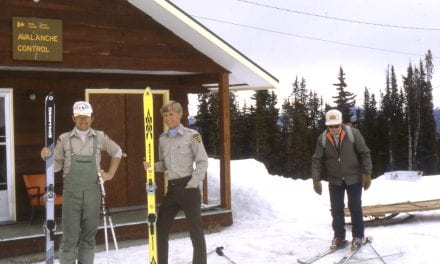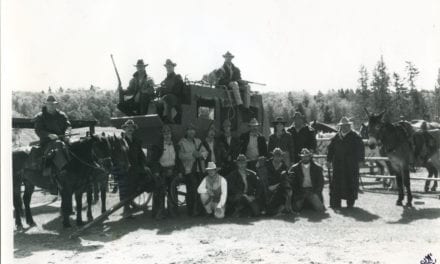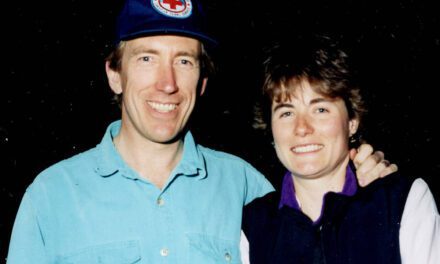(1:24:39) Another thing that you had at Pacific Rim that is very different from any place that I have been is there are five prisons in the Fraser Valley. In today’s world those guys have weekends and they have passes. They would get out of there for good behavior or something…They’d come out of there for “the holidays” and they would come to Long Beach. They had a motorcycle or two and a girl friend or two, or they would rent a car or a motor home because those guys got money. They are pretty tough guys to deal with, especially when you don’t have an act or regulations. In the last three or four years that I was there we would do stake outs with the police. They would bring in one of these vision vehicles that they have that you can sit in with the one way glass and look out. We would have a joint operation. You had to do it because you’d have 15, 20, 30 cars broken into on a weekend and smashups and stuff. So they would bring in these guys and we would do a stakeout, (get) these guys and put them into jail. They would be taken off to Nanaimo or Vancouver and charged. Some of them would have four, five or ten warrants out for them. In two or three weeks they would be back again and we would pick them up again. It was a swinging door deal. The police put them in one door and the do-gooders let them out the other door. We had a lot of that and as I say some of the young guys really got frustrated because they just couldn’t cope with that kind of an attitude…
(1:26:56) – Another thing at Pacific Rim, (it) was very laid back and nobody in that country ever took care of their garbage, Tofino didn’t and Ucluelet didn’t, the Indians didn’t and we (the park) weren’t any better…We still had tin cans sitting around here on the beach collecting garbage. By the time Banff had bear proof containers we still had tin cans and we had lots of black bears. No grizzly bears, but lots and lots of black bears. More black bears that any place that I have ever lived. Money and management (were the reasons Pacific Rim National Park didn’t have a proper garbage system). Some people didn’t think that it was important. I won’t say that about the last two Superintendents I had. Tom Heggie was the last Superintendent I had…Before that (it was) Jim Masuk. They were both good guys who tried their best to get it done…Tom was about the best administrator that I ever worked with, but he was a little startled at the pace and the travel (of Pacific Rim)…we got along very well, Tom and I and so did Jim and I. Those last two guys I worked with, six years with Jim and two or three with Tom, they weren’t there to fight you…they were there to work with you and get the things done. They were kind of like the old timers we had. The best… managers were the war veterans. Rory Flannagan and some of those guys…they could make a decision. Not like those wishy washy guys that are around today.
(1:30:10) I retired in January of 1991… It was good. I would do it again. I think that everybody should have a chance to work in one of those new parks. When I look back on it, it was very difficult and very frustrating. At times you wondered what the hell you were doing, but…I would do it again because it was a real educational thing to go and work in a mess like that. Crisis management! Again as I said, you have very few trained people. Even in Pacific Rim, there were very few people there who had worked in a real park. Other than some of the wardens that came there, that transferred in like Gordon McClain and different ones. Gordon was one of those calm, cool, collected guys. He never got excited about anything. He was very good to work with the young guys.
(1:31:58) Well, I had such a variety of work over the years, but I liked it all (in response to the question, “What about the warden service was most important to you?”) I didn’t live any place that I didn’t like. That was a good thing. I agree with what Cathy says about being a woman on a district. They have a lot tougher time than we do because they are home and they don’t have a lot of neighbors or company. Once they get children they are pretty tied down. When you go out to a place like we were in Maligne and you’ve got two or three feet of snow in December and January, it is not a very handy place for a woman with children… we had the cross-country ski crowd in the spring of the year, but I could take it or leave it. I could go out and spend a day by myself somewhere, but it was harder for her.
(1:33:33) I did both (skied and snowshoed). When I was out on a district, years ago in the Brazeau and places like that I snowshoed because I was alone. I travelled alone. I never had anybody with me ever. I traveled in the avalanche country and all over the place alone…They wouldn’t let you do that anymore, but the old timers did. In the eight years that I was at Maligne Lake we did not have a portable culvert bear trap or a tranquilizing gun.
(1:34:12) One other thing that I should tell you is that on the north boundary (of Jasper National Park) in the 1940s when I was first there…there was quite an established bunch of caribou. Caribou now are kind of in the public eye. Banff talks about reintroducing them…There was at least 150/200 caribou in the north end of Jasper when I first went there. In the late 1940s and early 1950s, 75-80% of the Jasper Park caribou lived on the north side of the park, north of the Athabasca River. Most of the people that talk about the caribou at Jasper even today weren’t out there in the wintertime and they don’t know their habits. The caribou all migrate. People say “Well they don’t migrate.” Even some of the written stuff says the mountain caribou are non-migratory. That is not is not true. There are probably only five to 15 percent that don’t migrate. The majority of them migrate out into the province and they did. The caribou on the north end of Jasper all started coming out of there after the rut. The rut is in October, November and they start moving east. They move east from December right up until the end of January. It varies on the winter. Some winters are earlier, some are late. It depends on how much snow there is. They went out into the province of Alberta. In the 1940s and 1950s that country was still wilderness. Grande Cache wasn’t built. They didn’t have all of this oil development. They didn’t have a pulp mill at Hinton. That’s where the caribou went…Then in April and May they came back into the park and back into the high country. They’d get up above the tree line and up above the ice fields and glaciers and that is where they want to be in the summertime. But they like the timber too because they eat two kinds of lichen. They eat ground lichen and they eat the old mature lichen which is in old mature trees. These people that are talking about all these caribou see they haven’t got a real handle on it. They’ve built a pulp mill at Hinton, they’ve built a pulp mill at Whitecourt and they’ve built a pulp mill at Grande Prairie. That and the logging and all the things that have happened there, they’ve wiped out that winter habitat. When you destroy the habitat, you destroy the caribou. Not only have they wiped out the habitat, but the country is full of roads and it is full of winter roads. They’ve got pipelines and they’ve got a railroad track from Entrance and Hinton, going north to Grande Prairie right through the middle of the caribou winter range. And now they’ve got people north of Hinton and Grande Cache too with snowmobiles and everything running around. Well the caribou can’t live there anymore. Not only did they take away their winter food source, but they’ve taken the habitat and they’ve made it so they can’t live there. There are too many people and too much activity. So they are gone. There were caribou in the south end of Jasper and there were caribou at Maligne Lake and caribou up in Poboktan Creek and a handful of them that got down into Banff. But they came out of that Athabasca country. The reason they were down around Banff and the Sulfur is that they were looking for a new home. Of course only a handful ever got down there. When I was at Maligne, John Stelfox from the Canadian Wildlife Service and I, we did some flying every other winter or so. I traveled around in the winter, but we also used to fly a little in the winter and we could never get more than 50 or 60 in that country. In the Tonquin Valley, they had a few in there, more of a summer crowd and then they’d come out of there, like they did at Maligne. They came out and went east out into the province. There were 10 or 12 and they would be along the highway, down in Banff (park) around the Sunwapta there. They have a little sign there about watching for caribou…That’s a good idea, but they’ve only got five to ten there anyway and those guys came out of Poboktan Pass. Poboktan Pass is on the east side there…and there are creeks that run out onto the Banff Jasper highway. There is not a gene pool. They are so small little bunches that they can’t do anything. I tell them that they should bring in reindeer because reindeer are better. You know the difference between a reindeer and a caribou? Well the caribou can’t fly! So it may be better off to have the reindeer!
(1:40:54) There was a warden up on Blue Creek by the name of Bob Jones. Bob Jones was one of the war veterans from the First World War. He was up in that country…I think he went up in 1939. He was there 13 years and travelled that country back to Jasper…Bob Jones told me that when he came out of Blue Creek in December and January that he could walk on the caribou trail. There was enough caribou there migrating into the province that he could take his snowshoes off and walk on the caribou trail. Now, I’ve never seen that. I’ve seen 150 caribou over a period of a couple of months migrating out of there. But nothing that would make a trail because that many caribou are spread out all over the place…



